これらの修理のヒントを使用して、消耗したリチウム バッテリー パックを復活させましょう
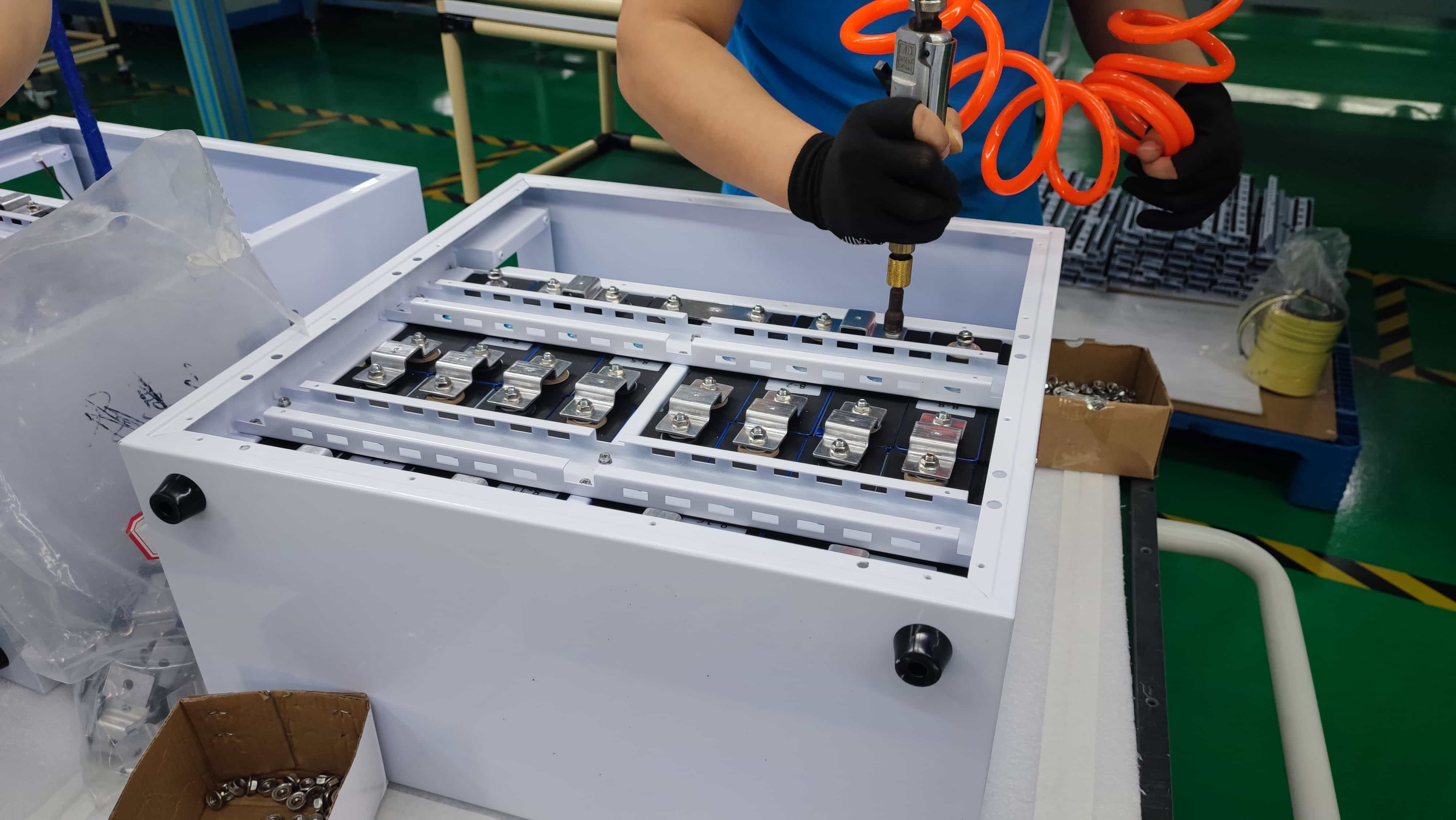
使い古したリチウム電池を捨てて、常に新しいものを買うことにうんざりしていませんか? 頼りにしているデバイスが電池切れで故障するとイライラします。幸いなことに、基本的な知識とツールがあれば、使い古したリチウム電池パックを復活させる方法を学び、その過程でお金を節約することができます。
このブログ記事では、修理について知っておくべきことをすべて説明します。 リチウム電池 リチウム電池の仕組みの基本から起こりうる問題のトラブルシューティングまで、さまざまな情報を提供します。また、よくある質問への回答も提供します。 リチウム電池に関する質問、適切なケア方法を十分に理解できるようになります。
始める前に、 リチウム電池 適切な安全対策を講じなければ、危険な状態になることがあります。実際の修理プロセスに進む前に、これらの考慮事項について詳しく説明します。 リチウム電池 人生に戻って荷造りしましょう、始めましょう!
リチウム電池の概要
リチウム電池 バッテリーは現代のテクノロジーに欠かせないものであり、私たちのつながりを維持するデバイスに電力を供給しています。バッテリーは機械の鼓動する心臓のように、充電可能なリチウムイオン化学反応であらゆる種類の機器や機械を動かしています。
これらの小さな発電所は、携帯電話から電気自動車まで、私たちの生活におけるエネルギーの使い方に革命をもたらしました。これらの強力なツールをスムーズに稼働させる任務を負っている技術者として、 リチウム電池の基礎を理解する パックの内容と、必要に応じて修復する方法について説明します。
主な構成要素は リチウム電池 パックには、セル、端子、コネクタ、保護回路が含まれます。リチウム化学セルは、2 つの電極間で電気を伝導するアノード (負極)、カソード (正極)、および電解液の 3 つの基本部分で構成されています。
これらの電気化学反応によって生成された電圧は、バッテリー パックが接続されているあらゆるデバイスや機器に電力を供給します。
充電するときは、 リチウム電池は過充電にならないよう注意深く監視する必要がある または充電不足になると、バッテリーの全体的な寿命が大幅に短くなる可能性があります。
ただし、適切なメンテナンスと手入れを行えば、リチウムイオン電池を搭載したデバイスは、経年劣化や摩耗による修理や交換が必要になるまで何年も使用できます。
方法を知る バッテリーパック内の問題を特定する これらの高度なユニットを利用するさまざまなアプリケーションの寿命を長く保つのに役立ちます。
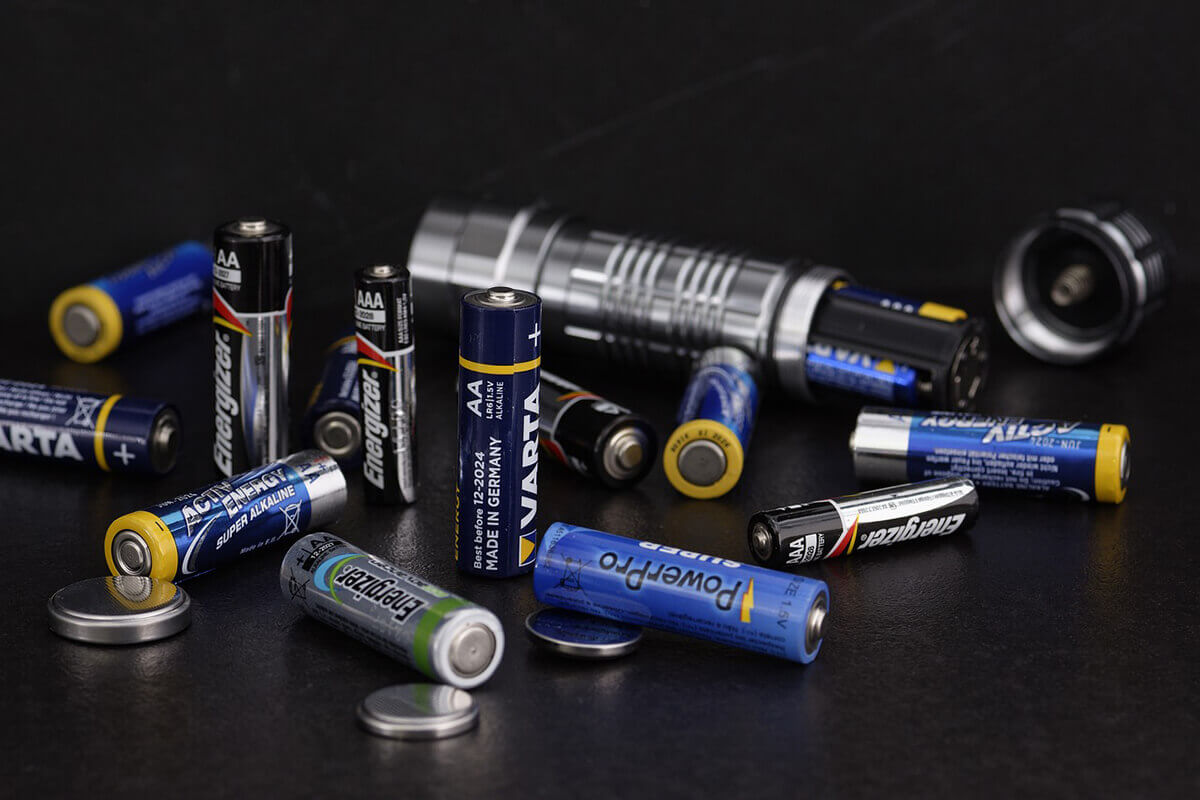
安全上の考慮事項
リチウム電池パックを修理する場合、 安全性 考慮することが最も重要です。したがって、このタイプの電源を扱う際に潜在的な危険を防ぐために、適切な安全上の注意事項とリスク軽減戦略を順守することが最も重要です。
安全な修理方法を確実に実行するための第一歩は、特定のリチウム バッテリー パック モデルに付随する具体的な詳細をよく理解することです。
関連するすべてのリスクを認識し、製造元が提供する警告ラベルや指示に従うことが重要です。
さらに、技術者は、手袋やゴーグルなどの保護具を着用し、端子のショートを避け、セル内に異物が入らないようにするなど、バッテリーを安全に取り扱うための適切なガイドラインに従うことが不可欠です。
さらに、リチウム電池の近くで工具を使用する場合は特別な注意が必要です。金属加工機器から発生する火花がセル内の可燃性物質と接触すると爆発を引き起こす可能性があります。
最後に、修理を終えて リチウム電池 パック内の使用済みセルを適切に廃棄することは必須であり、環境保護を確保し、法的影響を回避するために、常に危険物に関する法律に従う必要があります。
これには、地域の規制に従ってリサイクルまたは廃棄するために、承認された容器に古いセルを収集することが含まれます。技術者は、初期評価から最終廃棄まで、修理プロセスのすべての段階で必要な予防措置を講じることで、リチウム バッテリーとそのコンポーネントの取り扱いミスによって引き起こされる可能性のある傷害を防ぐことができます。
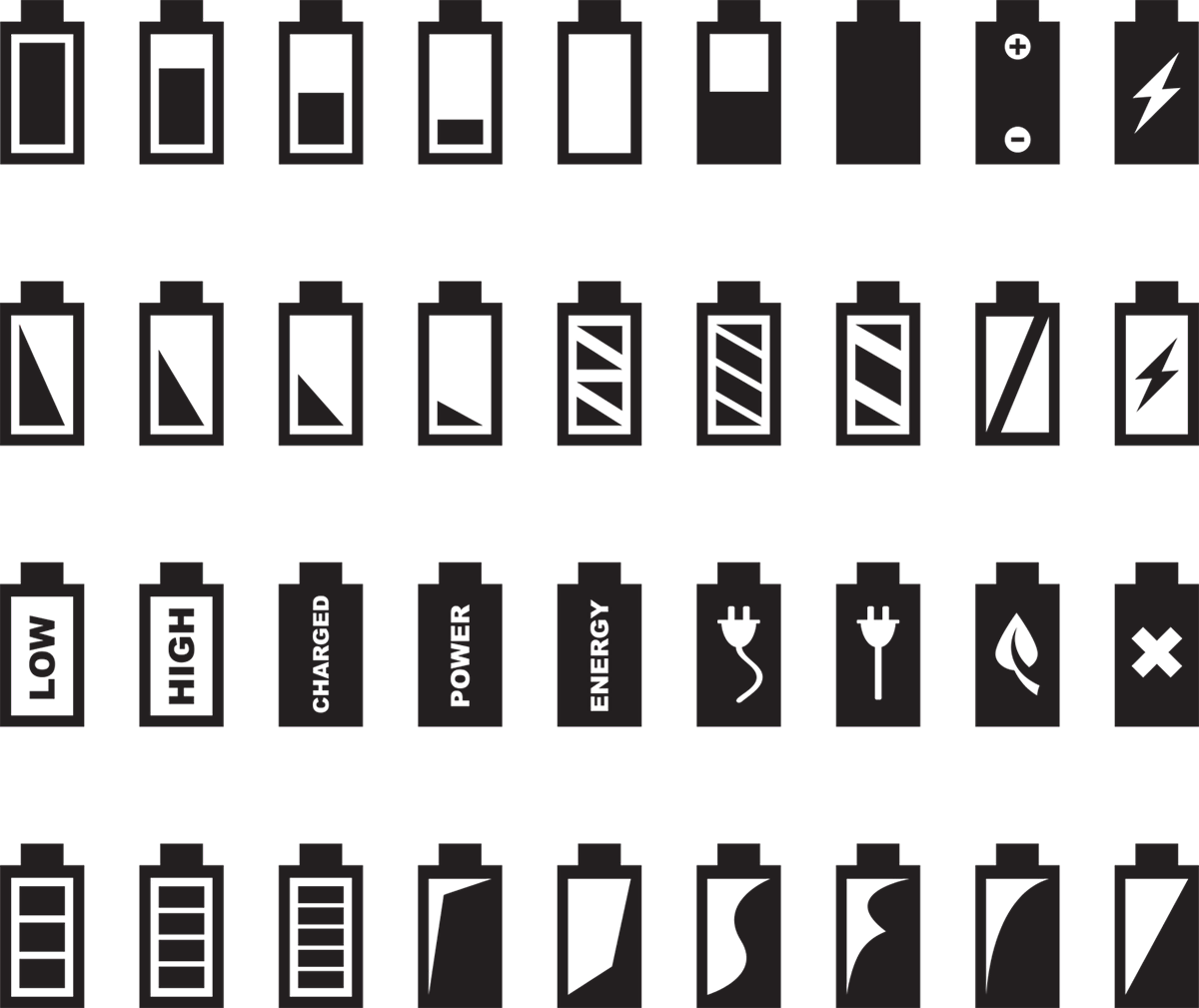
必要なツールと備品
リチウム バッテリー パックの修理には、適切なツールと備品が不可欠です。この作業用の包括的なツールキットを揃えれば、すべての基礎がカバーされます。はんだごて、熱収縮チューブ、マルチメーター、ワイヤー ストリッパーなど、これらのアイテムがあれば修理プロセスが簡単になります。
- はんだごて: バッテリー パックの電気接続には高品質のはんだごてが必要です。はんだごては、少なくとも 400°F (204°C) の温度に達することができる必要があります。
- 熱収縮チューブ: 熱収縮チューブも工具箱に入れておいてください。その目的は、修理中に使用される配線や端子を絶縁することです。接続するコンポーネントに適切に適合するサイズを選択してください。
- マルチメーター: 安全上の考慮から、セル パックの作業を開始する前に正確な電圧の読み取りが必要です。したがって、電圧を正確に測定するにはデジタル マルチメータが必要です。
- ワイヤーストリッパー: 配線を接続する前に絶縁体を剥がすには、刃の調整が可能な高品質のワイヤーストリッパーを使用してください。これにより、繊細な回路を作業する際の安全性がさらに高まります。
- 安全ゴーグル: 何よりも、露出した電池や熱いはんだ付け先端などの危険物を取り扱うときは、必ず安全ゴーグルを着用してください。そうすることで、修理中に何か問題が発生した場合でも、煙を吸い込んで火傷や炎症を起こすのを防ぐことができます。
これらのアイテムを手元に置いておけば、ユーザーは自信を持って、 リチウム電池パックと交換 故障した部品やセル - 最初はどんなに困難な作業に思えても!
バッテリーパックの分解
分解のプロセス リチウム電池 パックはデバイスの修理とメンテナンスに不可欠です。次の表は、デバイスを安全に取り外し、分解し、廃棄するための手順を示しています。 リチウム電池 パック。
| 手順 | 必要なツール | 説明書 |
|---|---|---|
| デバイスからバッテリーパックを取り外す | 安全メガネ、プラスドライバー | 電源を切り、ドライバーを使ってバッテリーを固定しているネジを外し、慎重に持ち上げます。 |
| バッテリーパックの分解 | プラスドライバー、マイナスドライバー、安全手袋 | ドライバーを使用してバッテリーパックのケースを開け、ケース内の個々のセル/モジュールを慎重に取り外して脇に置きます。 |
| バッテリーパックを適切に処分する | ビニール袋または容器、カミソリナイフ(オプション) | すべての部品をビニール袋または容器に入れます。必要に応じて、カミソリナイフを使用して、コンパートメントを接続しているワイヤーを切断します。 |
リチウム電池パックを分解する際には、安全な取り扱い方法を確実に守るために、各ステップで適切なツールを使用することが重要です。
また、取り外しや廃棄は正しく行わないと感電する恐れがあるため、注意が必要です。
これらの予防措置を講じることで、ユーザーは潜在的な危害から身を守ると同時に、将来の使用に備えてデバイスの状態を維持することができます。
セルの検査とテスト

修理プロセスは、徹底的なセルの検査とテストから始まります。バッテリーセルはリチウム バッテリー パックの重要なコンポーネントであるため、修理を続行する前にセルが良好な状態であることを確認することが重要です。
最初のステップは、各セルの電圧テストを実行することです。これにより、技術者はショートやオープン回路、配線接続の損傷などの即時の問題を正確に特定できます。
これが完了したら、ヒューズ、ワイヤー、コネクタ、端子を含むすべてのコンポーネントの目視検査が行われます。
システムに湿気が侵入した可能性を示す腐食の兆候がないか確認することも重要です。修理作業を開始する前に、必要に応じて故障した部品を交換する必要があります。
その後、すべてのシステムが正しく機能していること、およびユニット自体にさらなる損傷が発生していないことを確認するために、さらにテストを実施する必要があります。
細胞置換プロセス
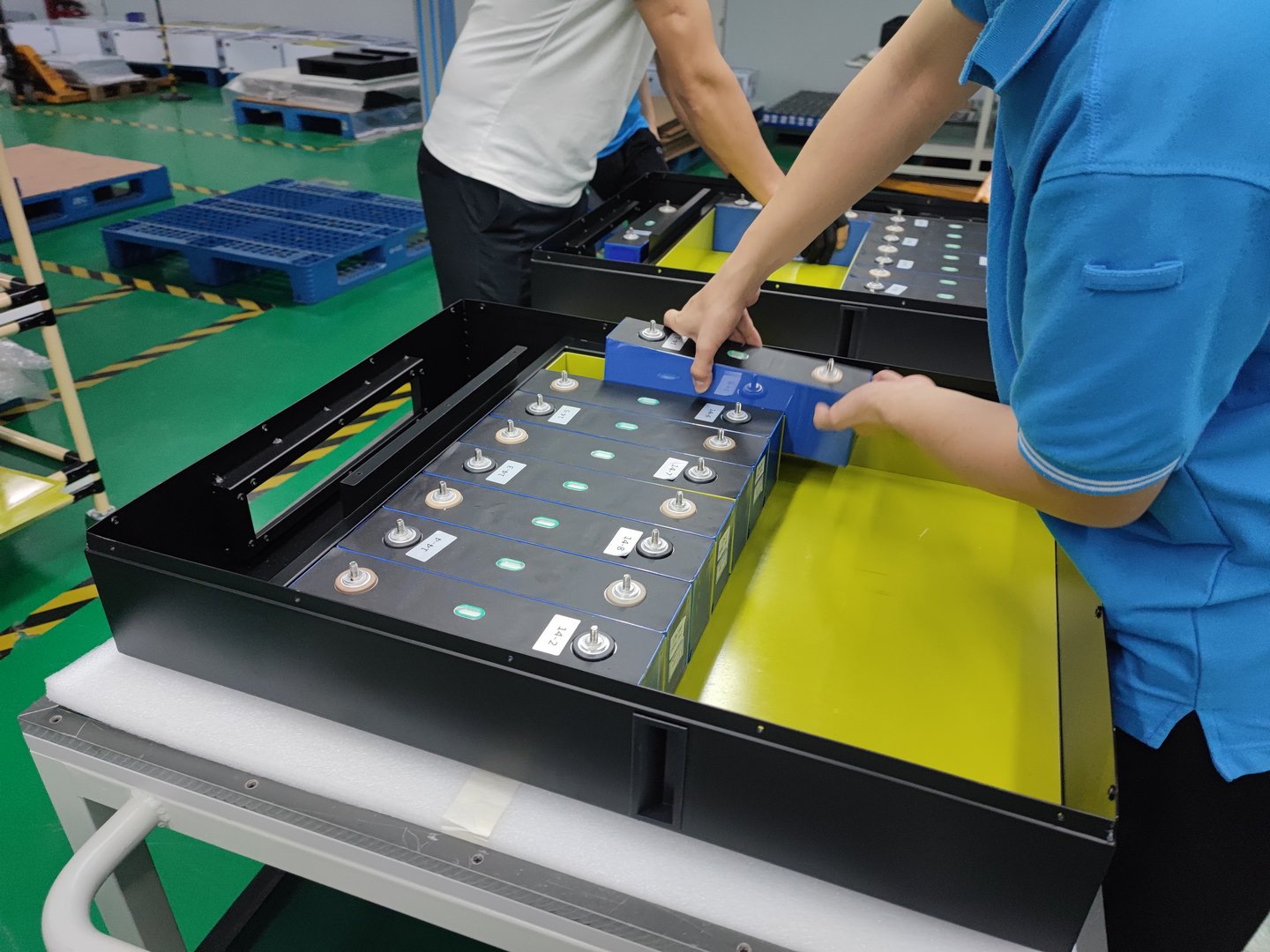
セル交換は、バッテリー パック内の個々のセルを交換するプロセスです。
このプロセスの最初のステップは、どのセルを交換する必要があるか、またパック全体の交換が必要かどうかを特定することです。バッテリー パックは複数の小さなバッテリー セルで構成されており、過充電や一般的な摩耗により特定のセルが故障した場合は、セル全体を新しいセルと交換できます。
メーカーが定める容量と電圧の要件に適合した高品質の交換用バッテリーを使用することが重要です。 オリジナルのリチウムの製造元 バッテリー パック。必要な部品がすべて揃ったら、実際の作業は、損傷した各バッテリー セルをホルダーから取り外し、それに関連するすべての配線を外すことから始まります。
その後、配線を接続する前に極性と方向が正しいことを確認しながら、新しいセルを取り付ける必要があります。
最後に、セル交換プロセスの一環として、すべての新しいセルのインストールが完了した後にテストを実施し、新しくインストールされたコンポーネントが適切に動作することを確認する必要があります。
テストでは、電圧レベルや放電/再充電時間などの全体的なパフォーマンス指標をチェックし、すべてが工場の仕様に従って正しく動作することを確認します。
バッテリーパックの再組み立て
組み立て直す リチウム電池 バッテリー パックの組み立てには、細部への注意と精度が必要です。バッテリー パックを正しく組み立て直すには、次の手順に従う必要があります。
- セル、ワイヤ、端子、ケース カバーなど、リチウム バッテリー パックのすべてのコンポーネントが揃っていることを確認します。
- セルをそれぞれの端子接続に組み立てます。
- モデルの要件に応じて、ケーブルまたははんだを使用して各セル接続を安全に接続します。
- バッテリーを取り付ける 製造元の指示に従ってバッテリーパックアセンブリトレイに取り付け、必要に応じてネジで固定します。
- 特定のアプリケーションの指示に従って、すべての正極端子と負極端子を接続/はんだ付けし、適切な電圧が達成されることを確認します。
すべての接続が完了したら、 組み立てたリチウム電池をテストする 使用前にパックを点検してください。これにより、パックの組み立てプロセス中にショートが発生していないことが確認されます。
さらに、操作時に誤動作やその他の問題を引き起こす可能性のある緩んだ接続や目に見える損傷がないことを確認するために、目視検査を行う必要があります。
テストで問題が発生した場合は、すべてのコンポーネントを取り外し、破損した部品や誤った配線やはんだ付け箇所などの潜在的な原因がないか検査します。
これらを無事に完了すると 再組み立てしたリチウム電池を安全に使用するための手順 パック。
電子部品の交換
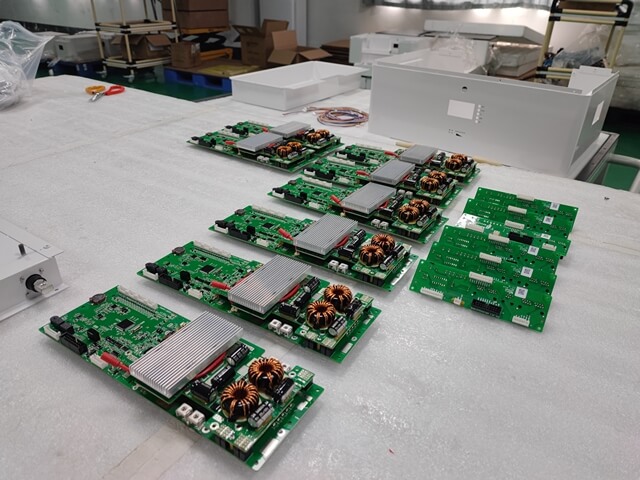
リチウム バッテリー パックの修理プロセスは、各ピースが電子部品を表す複雑なパズルに例えられます。これらの部品を交換する時期が来たら、それらを適切に識別して交換するために必要な手順を実行することが不可欠です。
電子部品を交換するには、部品の識別と取り付け技術に関する知識、および交換プロセス中に使用するさまざまなツールに精通している必要があります。これには、必要な修理の種類に応じて、電圧テスター、ドライバー、ワイヤーカッター、はんだごて、その他のアイテムが含まれます。
電気部品を扱う作業を始める前に、地元の行政機関または製造元の指示による関連する安全ガイドラインをよく理解しておいてください。
電子部品の交換を開始するには、まず、特定のバッテリー パック モデルに合わせてカスタマイズされた信頼性の高い部品交換ガイドを見つけます。
実際の修理を試みる前に、どの部品を交換するのかを正確に示す図面を確認すると役立つ場合があります。すべての手順を注意深く読み、プロジェクトを開始する前に何を行う必要があるか理解してください。
正しい部品を入手したら、必要に応じて取り付けネジまたはボルトを緩める前に、各部品の配線を外して古い部品の交換を開始します。
最後に、元の仕様に従ってすべてを再度組み立て、組み立てが完了したら適切な動作をテストします。
はんだ付け技術
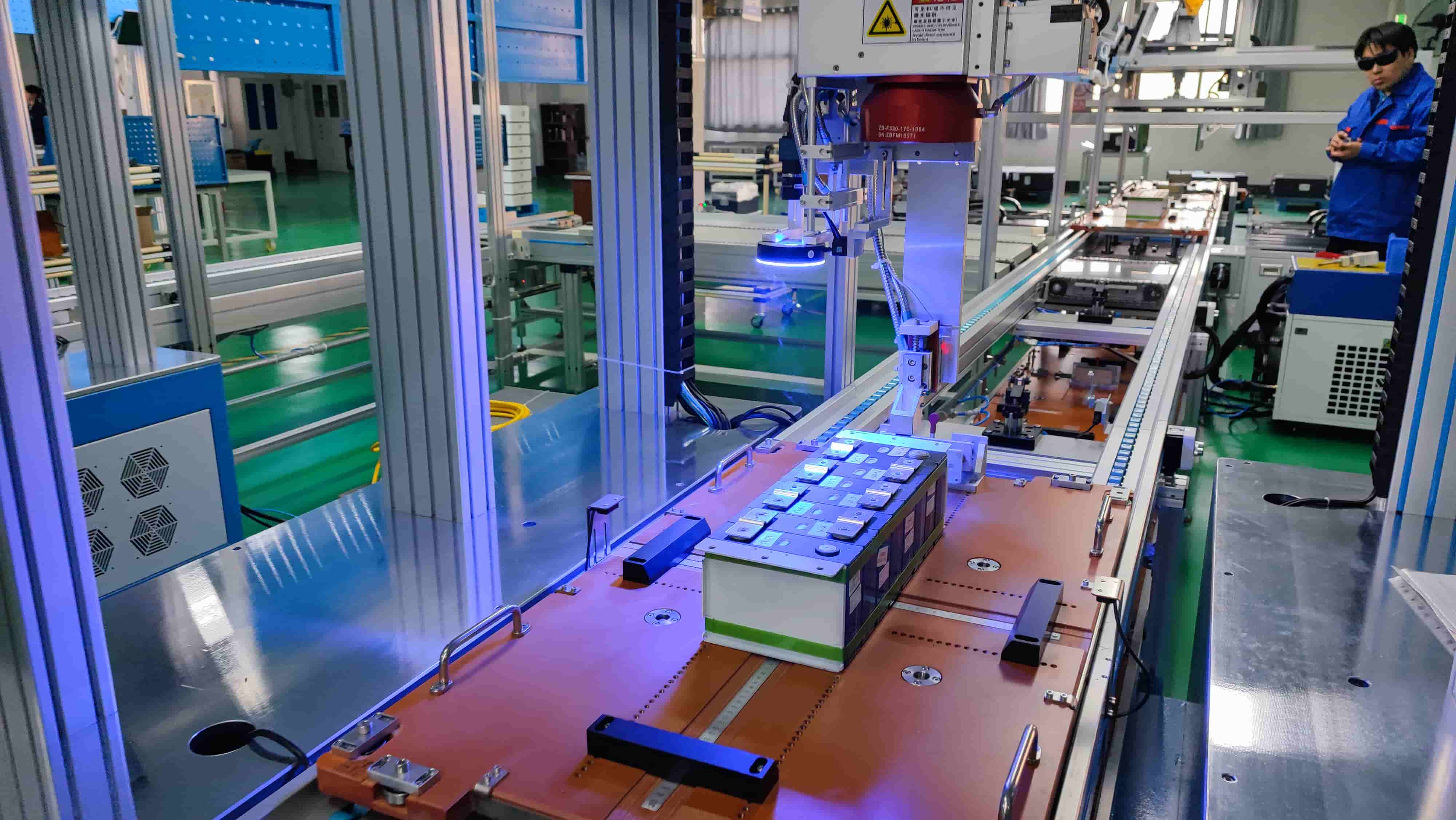
リチウム電池パックを修理するには、はんだ付け技術を正しく実行する必要があります。この作業に最も重要なツールは、はんだごて、はんだ除去ポンプ、はんだペースト、フラックス除去剤です。
これら 4 つのコンポーネントを熱収縮チューブと組み合わせることで、技術者は緩んだ接続や露出した配線を効果的に修復できます。
プロセスの最初のステップは、バッテリーセルの適切な場所に適切な量のはんだペーストを塗布することです。十分な量のペーストを塗布したら、はんだごてでペーストが溶けてセルの表面にしっかりと接着するまで加熱します。
必要以上にペーストが使われている場合は、はんだごてで加熱する前にはんだ吸い取りポンプを使用して取り除くことができます。冷却して固まった後、必要に応じてフラックス除去剤を湿らせた布で余分なはんだを拭き取ることもできます。
最後に、必要に応じて各接続ポイントの周囲に熱収縮チューブを追加して、絶縁と張力緩和を実現する必要があります。これにより、接合部にかかるストレスが軽減され、バッテリー パック内のすべてのコンポーネント間の安全な電気経路が確保されます。
熱収縮チューブは安全性を高めるだけでなく、完成時の仕上がりの美観も向上させます。
バッテリーパック内のセルのバランス調整
古い格言に「鎖の強さは、最も弱い部分によって決まる」というものがあります。リチウム電池パックにも同じ原則が当てはまります。
パック内の個々のセルが適切にはんだ付けされ、修理されていたとしても、電圧が不均一でバランスの取れていないバッテリーは、依然として信頼性の低い電源につながる可能性があります。
バッテリーパック全体が最適に機能するようにするには、バッテリーパック内のセルのバランスをとることが重要です。
BMS 最も一般的なバッテリーバランス調整システムの 1 つです。永久的な損傷や火災の危険を引き起こす可能性のある過充電などの問題を回避できます。
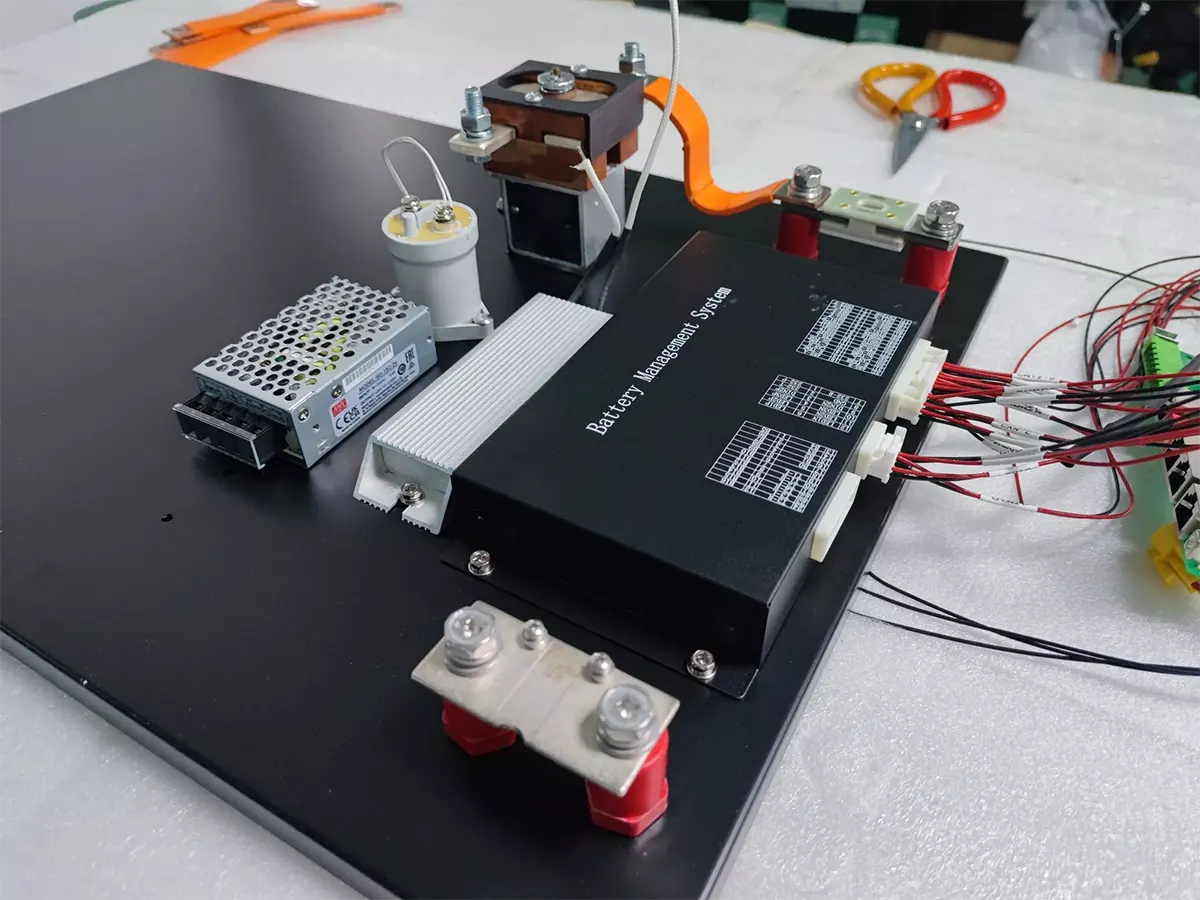
ほとんどのリチウムイオン電池では、バランス充電は通常、充電サイクル中に各セルの電圧を測定および監視するバランス充電器やマイクロコントローラなどの特殊な機器を使用して行われます。
この方法では、電流レベルを適宜調整し、必要に応じて遮断することで、どのセルも必要以上に充電されることなく、すべてのセルが一度に最適電圧に達することを保証します。
さらに、バランス調整により、負荷を均等に分散することで弱いセルへのストレスも軽減され、同時に異なる領域を流れる不一致な電流によってパックの特定のセクションが短絡したり過負荷になったりするのを防ぎます。
場合によっては、特定のセルを電圧レベルと容量の点で他のセルと整合させるために手動調整が必要になることがあります。ただし、正しく実行されれば、適切な知識とツールを備えた経験豊富な修理技術者にとってはそれほど難しいことではありません。
全体的に、リチウム電池パックが使用前に適切にバランスされていることを確認することは、安全性の観点と効率性の観点の両方から見て、将来大きな問題を回避するために絶対に不可欠です。
すべてのセルが最大限の能力で動作するように注意することは、どのようなアプリケーションに使用する場合でも、全体的に信頼性の高いパフォーマンスを確保するのに大いに役立ちます。
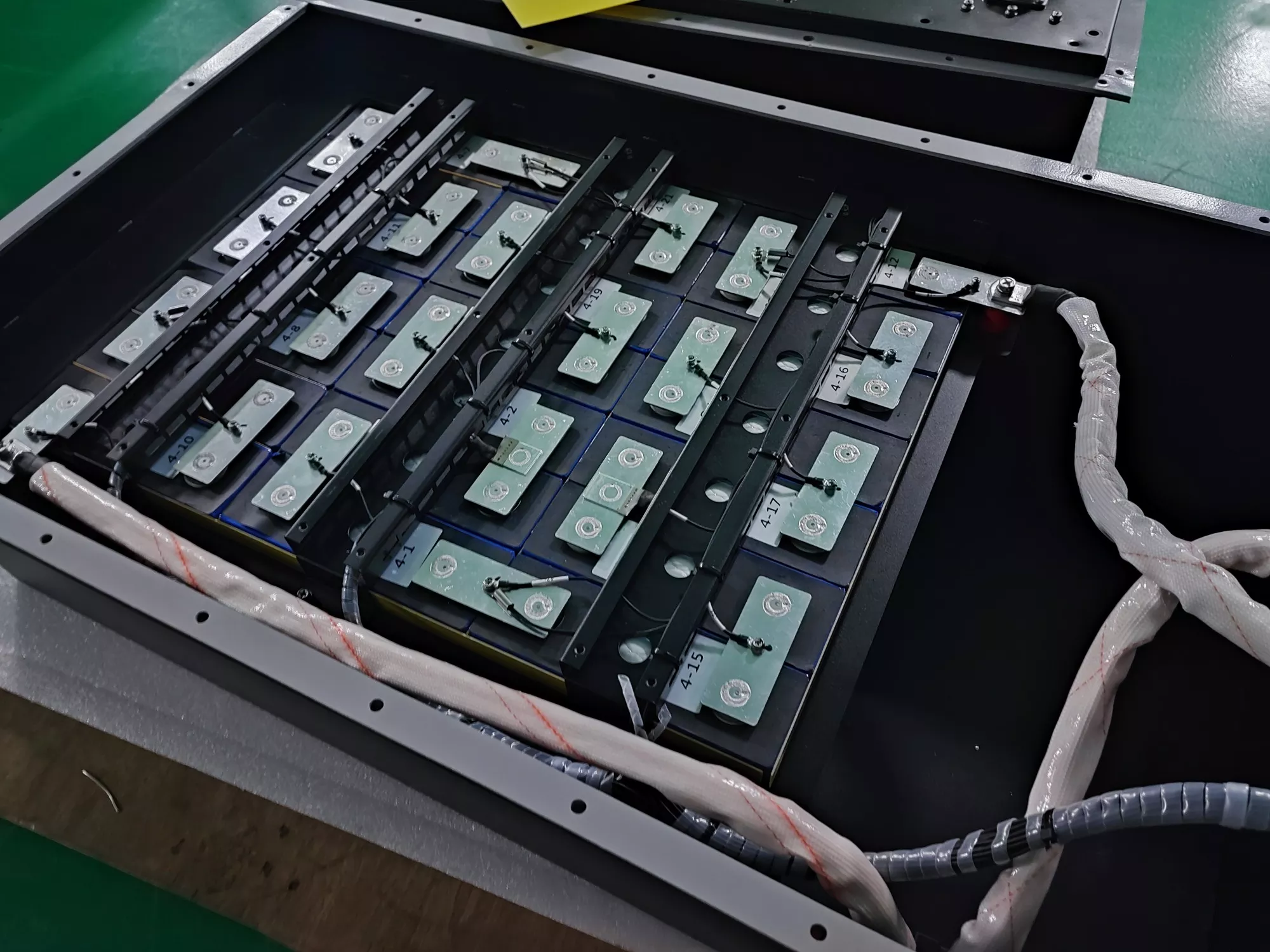
セルを正しく接続する
リチウム バッテリー パックの修理を成功させるには、セルを正しく接続することが最も重要です。そのためには、適切な技術を使用して、各セルが正しい順序と方向で接続されるようにする確立された手順に従う必要があります。
セルを正しく接続するには、次の 3 つの基本的な手順が必要です。
| ステップ | 説明 | 必要な機器 |
|---|---|---|
| 1 | すべてのセルのプラス/マイナス端子を識別する | マルチメーター |
| 2 | 1つのセルのプラス端子を別のセルのマイナス端子に接続します | はんだごてとはんだ線 |
| 3 | 最後の2つの端子をしっかりと接続します(プラスとプラス、またはマイナスとマイナス) | 熱収縮チューブとヒートガン |
これらの手順は慎重かつ正確に実行する必要があります。これらの手順中に間違いやエラーが発生すると、バッテリー システム全体の壊滅的な障害につながる可能性があります。
まず、マルチメーターを使用して、各セルのどちら側にプラス (+) 端子とマイナス (-) 端子があるかを特定します。
この手順が完了したら、1 つのセルのプラス端子を別のセルのマイナス端子に接続して、最初のセル ペアをはんだ付けします。
次に、修理作業に必要なセルの数に応じて、両方ともプラス、または両方ともマイナスのいずれかの接続されていない端子のセットが 1 つだけ残るまで、残りのすべてのペアに対してこのプロセスを繰り返します。
最後に、ヒート ガンとともに最後の接続ポイントの周りに熱収縮チューブを使用して密閉し、それ以上の損傷から保護します。これらの作業を適切に完了することで、修理したリチウム バッテリー パックがその後も適切かつ安全に機能することが保証されます。
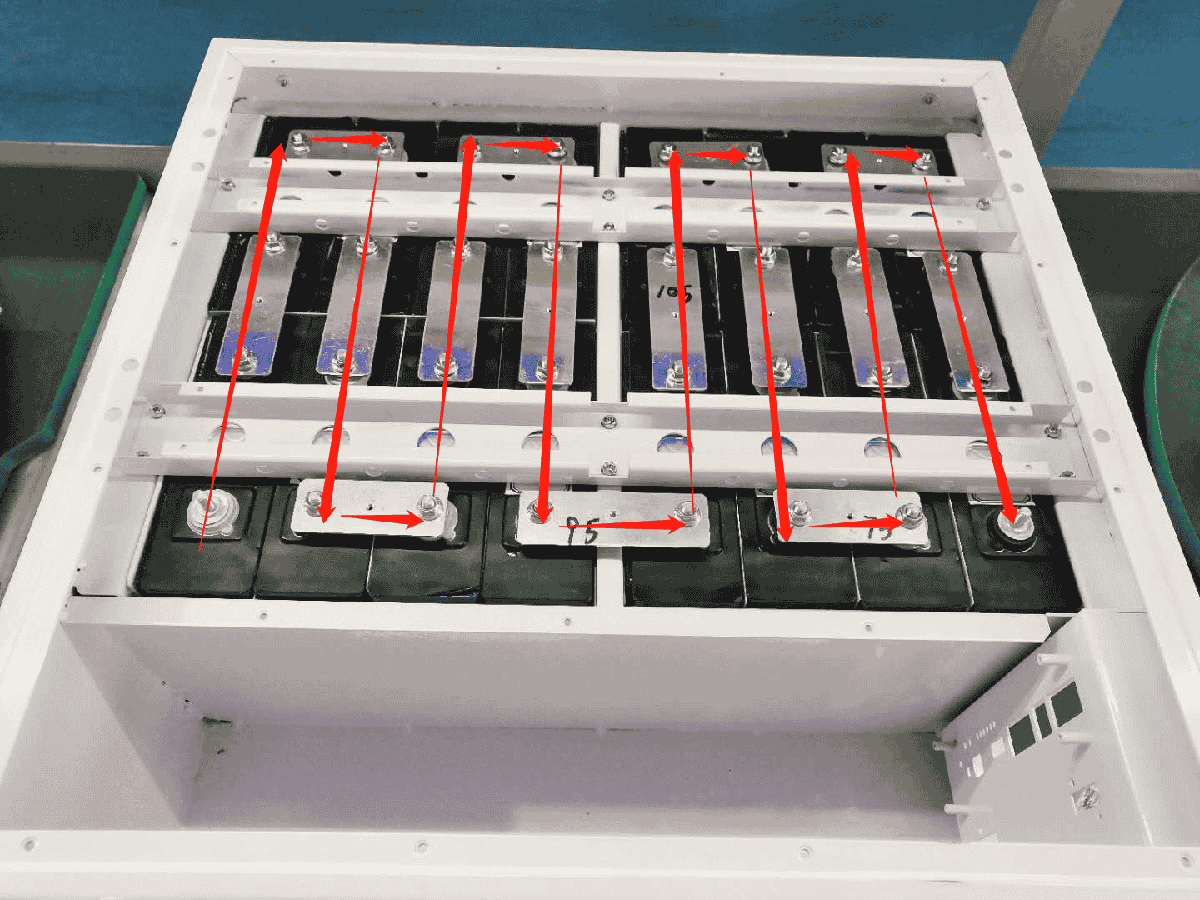
バッテリーパックの密封
セルが正しく接続されたので、次は リチウム電池 保護のためにパックします。
バッテリーの密封は、バッテリーの寿命を延ばし、個々のセルの偶発的な損傷やショートを防ぐために必要なプロセスです。この密封プロセスには、細心の注意を払って実行する必要があるいくつかの手順が含まれます。
- 清掃 - シーラントを塗布する前に、すべての表面を徹底的に清掃する必要があります。
- シーラントの塗布 - 選択したシーラントは、製造元の指示に従って塗布する必要があります。塗布する前に薄めたり混ぜたりする必要がある場合があります。
- 硬化 - シーラントを塗布したら、使用したタイプに応じて、空気または熱にさらして硬化させる必要があります。
- テスト - 硬化が完了したら、すべての接続が安全であり、シーリング プロセス中に汚染が存在しなかったことを確認するために、電気テストを実行できます。
シーリングに使用する材料の選択は、予想される使用寿命、環境条件、安全要件などのさまざまな要因によって異なります。
エポキシベースの樹脂は、強力な接着特性と極端な温度や化学物質に対する耐性があるため、最もよく使用されます。この方法を使用する場合は、過剰に塗布しないように注意してください。接着剤が多すぎると混乱が生じ、将来的にセルの故障につながる可能性があります。
密封後にシュリンクラップテープで保護コーティングを施すと、強度が増すだけでなく、後で必要に応じてケースを再度開けなくてもアクセスできるようになります。
これらのガイドラインに正しく従えば、リチウム バッテリー パックは高品質の材料で安全に密封され、ほこり、ガス、湿気の侵入などの外部要素や、ショートや火災の原因となる可能性のある端子や他の電源との意図しない接触から長期間保護されるので安心です。
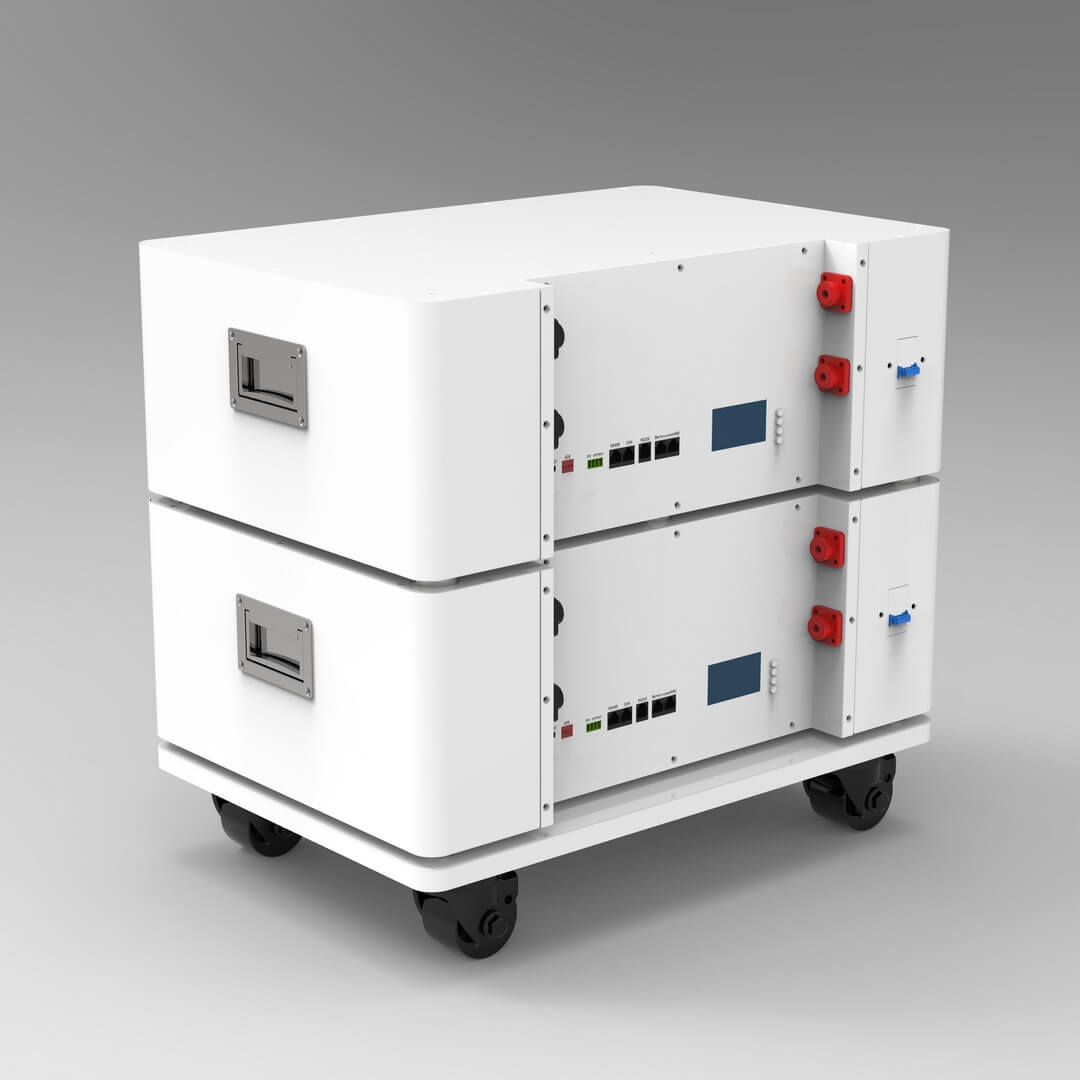
機能テストと校正
機能テストと校正 リチウム電池 バッテリーパックの適切な動作を保証するには、バッテリーの調整が不可欠です。このプロセスには、バッテリーの機能を診断し、その後、製造元の仕様に合わせてパフォーマンスを調整することが含まれます。
このプロセスの最初のステップでは、バッテリーの現在の状態を正確に診断する必要があります。そのためには、技術者がマルチメーターやオシロスコープなどの特殊な機器を使用して、パック内のさまざまなセルの電圧と出力を測定する必要があります。
これらのテストから得られた結果は、製品の技術データシート (TDS) に記載されている結果と比較する必要があります。不一致が見つかった場合は、キャリブレーションに進む前にさらに調整を行う必要がある場合があります。
すべての測定が完了したら、次のステップは、TDS に従って必要な値を満たすか超えるまで、個々のセルの電圧レベルを調整してバッテリーを較正することです。
資格のある技術者は、校正中にセルの温度を監視し、プロセス全体を通じてセルが安全な動作限度以下に保たれるようにします。
完了したら、必要に応じて確認のために TDS に記載されているテスト以外の追加テストを実行できます。
適切な リチウム電池パックの動作の経時変化ただし、通常の使用条件や周囲温度の変化が個々のセル内の蓄積エネルギー レベルに影響を与えるため、同様の手法を使用した定期的な再調整が必要になる場合があります。
技術者はメーカーに相談することをお勧めします。 リチウム電池の修理手順を開始する前にガイドラインに従う 安全上の理由から、不適切な取り扱いは、誤った手順に従うことに関連する火災や爆発の危険により、重傷や死亡につながる可能性があります。

起こりうる問題のトラブルシューティング
リチウム電池パックに関して最もよく聞かれる質問の 1 つが、修理方法だというのは皮肉に思えるかもしれません。結局のところ、これらのデバイスは長持ちし、信頼性があることが求められているのです。
それでも、トラブルシューティングや修理が必要な場合もあります。これを念頭に置いて、以下にいくつかの考えられる問題を概説した表を示します。 リチウム電池パックとそれに対応するソリューション:
| 問題 | トラブルシューティング | 解決 |
|---|---|---|
| バッテリーが充電されない | 電源/充電器が正しく接続されているか確認し、電圧レベルを確認し、充電器または充電中のデバイスの温度レベルを確認します。 | 必要に応じて故障した部品やコンポーネントを交換し、該当する場合は設定を調整し、必要に応じてコネクタや接点を清掃します。 |
| 容量が少ない | 電流計またはマルチメーターを使用してパックからの電流を測定し、センサーの読み取り値やその他の関連パラメータをチェックしてパックの負荷が正しいことを確認します。 | 必要に応じて設定を調整する(例:電圧をカットオフする)、古くなった部品やコンポーネントを交換する、充電時間を短縮してバッテリーセル内の熱の蓄積を減らす |
| 動作/充電サイクル中の過熱 | 操作中/充電中は温度レベルを注意深く監視し、バッテリーパックの外部状態に損傷(ひび割れなど)がないか検査し、パックの内部コンポーネントに水分が浸入している兆候がないか確認します。 | バッテリー パック内のセル接続にショートや断線がないか検査し、必要に応じて損傷したセルを交換し、動作/充電サイクル中にバッテリー パックの周囲の換気を改善し、必要に応じて冷却ファンを追加して熱をより速く放散します。 |
リチウム電池パックに関連する潜在的な問題を特定する際には、それぞれの問題には解決に向けて独自のアプローチが必要であることを覚えておくことが重要です。
上記の表は、修理作業を試みる前に、リチウム バッテリー パックのパフォーマンスに関連する潜在的な問題を診断するのに役立つ一般的なガイドとしてのみ使用されます。

最終準備と保管
リチウム電池パックの問題を特定したので、最終的な準備と修理プロセスを完了する必要があります。 保管手順リチウム電池パックを安全に保管し、適切に管理するには、以下の要素を考慮することが重要です。
- 最終準備:
- セルの接点に腐食や損傷の兆候がないか確認します。
- すべての電気接続が安全であり、汚れやゴミがないことを確認してください。
- 該当する場合は、切断されたコンポーネントを再接続します。
- 適切なテスト機器を使用して、バッテリー パックに接続されているすべての部品の機能をテストします。
- 保管手順:
- 電池は元のパッケージに入れて、直射日光や極端な温度を避け、涼しく乾燥した環境で保管してください。
- 長期間使用しない場合は充電/放電を避けてください。時間の経過とともにセルのパフォーマンスが低下する可能性があります。
- セル間の不均衡を示す可能性のある異常を特定するために、セル電圧を定期的に監視します。
重要なのは 通常のメンテナンス リチウム電池パック内の個々のセルに対して検査を実施し、保管および使用中にセルが安全であることを確認する必要があります。
これには、各セルの摩耗や物理的損傷の兆候の検査、内部抵抗や温度調節機能のチェック、数か月ごとの全セルの充電レベルのバランス調整などが含まれており、寿命全体にわたって最適なパフォーマンスを維持します。
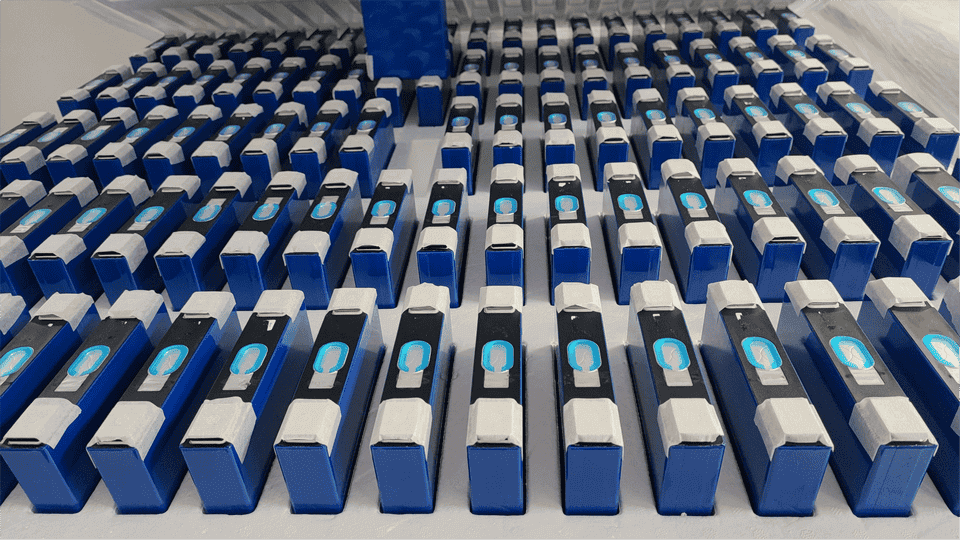
よくある質問
リチウム電池は通常どれくらい持続しますか?
研究によると、リチウム電池の平均予想寿命は、適切なメンテナンスを行えば 2 ~ 3 年です。
温度、充電頻度、充電速度、使用年数などの要因も、リチウム電池パックの寿命を決定する上で重要な役割を果たします。
例えば、氷点下の気温ではパフォーマンスが低下し、 リチウム電池の寿命 内部の化学反応によるものです。
リチウム電池の故障の最も一般的な原因は何ですか?
共通の原因は リチウム電池の故障 通常、過充電、過熱、物理的損傷、寿命、製造上の欠陥、湿気への暴露、不適切な保管などです。
そのため、予防策を講じることが重要です 適切な保管方法に従うことでリチウム電池の故障を防ぐ、充電、および取り扱い手順について説明します。
リチウム電池が故障していると思われる場合は、故障した電池は安全上のリスクをもたらす可能性があるため、使用を続けるのではなく交換することをお勧めします。
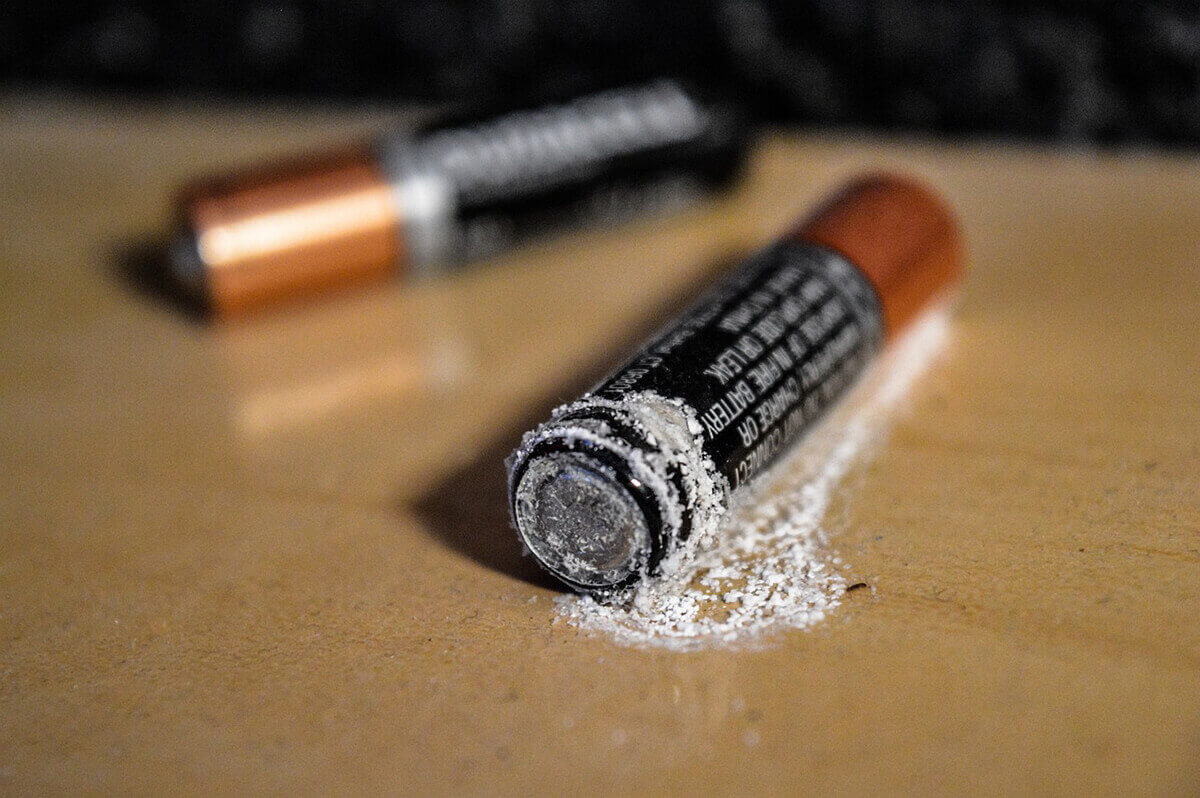
リチウム電池パックの修理にはどれくらいの費用がかかりますか?
リチウム バッテリー パックの修理費用は、損傷の種類と程度によって異なります。一般的に、修理費用は問題の診断に必要な複雑さと時間によって異なります。
たとえば、技術者が特殊な工具と材料を使用してバッテリーを分解する必要がある場合、一部の部品を交換したり、軽微な修理を行うだけの場合よりも費用が高くなります。
リチウム電池パックを修理する場合、人件費と部品交換費用の両方を考慮することが重要です。人件費は、技術者が問題を特定して必要な修理を行うのにかかる時間によって異なります。
部品の交換コストは、セルやワイヤーなどの単純な交換の場合は数百ドルから、回路基板やコントローラーなどの大型部品の場合は数千ドルに及ぶ場合があります。
修復不可能な損傷のためにシステム全体を交換する必要がある場合、修理コストが大幅に高くなる可能性があります。
リチウム電池は環境に優しいですか?
リチウム電池は、環境への影響の点で他の種類の電池に比べていくつかの利点があります。
例えば、 長寿命は、他の多くの種類の電池よりもエネルギー効率が高く、エネルギー密度も高くなっています。さらに、鉛やカドミウムなどの有毒な重金属は含まれていません。
しかし、リチウム電池には環境面での欠点がないわけではない。 リチウム電池の生産 水、金属、鉱物など、大量のエネルギーと天然資源が必要です。
さらに、リチウム電池は適切に廃棄されなければ、土壌や水中に有毒化学物質や重金属を放出する可能性があるため、環境や人間の健康に危険をもたらす可能性があります。
リチウム電池は環境への影響という点では完璧ではありませんが、適切な廃棄およびリサイクル方法が守られている限り、他の多くの種類の電池に比べると比較的環境に優しい選択肢です。

リチウムイオン電池とリチウムポリマー電池の違いは何ですか?
リチウムイオン電池とリチウムポリマー電池は、さまざまな電子機器で使用されている 2 つの一般的な電池技術です。両者の最も大きな違いは、電力容量と安全機能にあります。
リチウムイオン電池がポリマー電池に比べて持つ主な利点は、市販されている他のどの充電式電池よりも単位体積あたりに多くのエネルギーを保持できることです。
そのため、サイズが重要となるノートパソコンやスマートフォンなどのポータブル デバイスの電源として最適です。さらに、リチウムイオン セルは他のセル ケミストリーに比べて効率と耐久性に優れています。
しかし欠点としては、リチウムイオン電池は酸素との反応性が高いため、充電中や放電中に適切に取り扱わないと発火する可能性があるため、安全対策を組み込む必要があります。
対照的に、リチウムポリマー (LiPo) バッテリーは、LiIon セルよりも電圧安定性は劣りますが、設計上の制約が少なく、さまざまな形状やサイズで製造できるため、優れた柔軟性を備えています。
さらに、一部の LiPo パッケージには、充電サイクル中に過熱の問題が発生するのを防ぐための温度センサーなどの追加の安全機能が含まれています。
ただし、比較すると、LiPo のエネルギー密度は低いため、同様のサイズの LiIon パックよりも電力容量が低くなります。そのため、特定のアプリケーションに適したバッテリー パックの種類を選択する際には、この点を考慮する必要があります。
として リチウム電池を扱う専門の修理技術者 パックは、安全プロトコルを損なったり、不適切な取り扱い手順による損傷のリスクを冒したりすることなく、最適なパフォーマンスを確保するために、各タイプが示すさまざまな特性を考慮する必要があります。
したがって、いずれかのタイプのバッテリー パックに関する修理を行う前に、技術者が両方の技術に精通しておくことが不可欠です。

要約する
結論として、使い古したリチウム バッテリー パックの修理方法を学ぶことで、お金を節約し、無駄を減らすことができます。このブログ記事で説明されている手順に従うことで、デバイスのバッテリー寿命を管理し、常に新しいバッテリーを購入する煩わしさを回避できます。リチウム バッテリーを扱うときは常に安全を最優先し、分解、検査、再組み立ての適切な手順に従ってください。
適切にケアすることで リチウム電池、寿命を延ばし、デバイスを最大限に活用することができます。また、耐用年数が終わったら、バッテリーを適切に保管して廃棄することも忘れないでください。リチウムバッテリーパックの修理について質問や懸念がある場合は、専門家または リチウム電池メーカー ガイダンスのため。
このガイドが、 死んだリチウムを復活させる バッテリー パック。少しの忍耐と細心の注意を払えば、バッテリー パックを修理して、すぐにお気に入りのデバイスを再び使用できるようになります。
